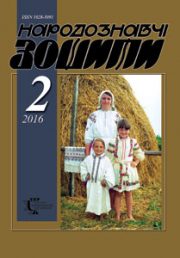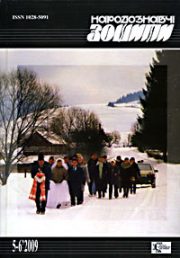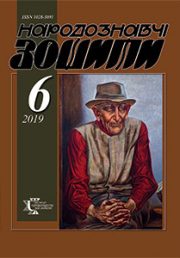The Ethnology Notebooks. 2023. № 2 (170), 367—371
UDK[378.6:74](4-191.2-11)”19″
DOI https://doi.org/10.15407/nz2023.02.367
FEATURES OF THE DEVELOPMENT OF ART AND INDUSTRIAL EDUCATION INSTITUTIONS IN CENTRAL-EASTERN EUROPE
DYACHENKO Alla
- ORCID ID: http://orcid.org/0000-0003-4496-5931
- Candidate of Pedagogical Sciences,
- Associate Professor of the Department of Industrial Design and Computer Technologies, Acting Dean of the Faculty of Decorative and Applied Arts, Kyiv State Institute of Decorative Art And Design Named by M. Boychuk,
- 32, M. Boichuka (Kikvidze) St., 01014, Kyiv, Ukraine,
- Contacts: e-mail: alla.diachenko0107@gmail.com
Abstract. Introduction. Taking into account the relevance of the development of artistic and industrial education, the questions highlighting the prerequisites of such development are especially important.
Problem Statement. In recent years and to this day, understanding the art industry requires special training of specialists in a separate field. This approach recognizes the need to review the development of artistic and industrial higher education institutions in Ukraine and the countries of Central Europe.
The purpose is to highlight the prerequisites for the development of artistic and industrial education in Ukraine and the countries of Central Europe on the basis of a comparative analysis.
Method. The methods of theoretical analysis, synthesis, abstraction, description, comparison and generalization were used to reveal the goal.
The results. Features of the development of the art industry in European countries are characterized. The formation of artistic and industrial education in the territory of the countries of Central-Eastern Europe is highlighted. The peculiarities of the development of art and industrial education institutions in Ukraine are analyzed.
Conclusions. It was revealed that in the 1920s in Ukraine, part of art education turned into part of art and industrial education.If we look at the general picture of the development of applied art in the countries of Central and Eastern Europe, then from the middle of the 19th century the movement for the revival of stylistic unity in art began.
Keywords: artistic and industrial education, trends, development, art industry, educational institutions, art.
Received 25.02.2023
REFERENCES
- Ern, O. (Ghaghenmejster), & Moshak, M. (2002). Kamianets-Podilsk art and industrial school, its role in the development of art education and cultural life of Podillia in the 20s—30s of the 20th century. Visnyk Khark. derzh. akademiji dyzajnu i mystectv, 1 [in Ukrainian].
- Kuz’micheva L.A. (Ed.). (1994). One hundred designers of the West. Moskva [in Russian].
- Chebykin, A. (2000). Art education in Ukraine of the 21st century (cultural aspect). Dialogh kuljtur: Ukrajina u svitovomu konteksti. Khudozhnja osvita: zb. nauk. prac’, 5, 30—39 [in Ukrainian].
- Aronov, V.R. (1992). Theoretical concepts of foreign design. Moskva: VNIITJe [in Russian].
- Shmaghalo, R.T. (2005). Art education in Ukraine in the mid-19th — mid-20th centuries: structuring, methodology, artistic positions: Lviv National Academy of Arts. Lviv [in Ukrainian].
- Nikulenko, S.I. (1997). Formation of the higher art school in Ukraine (1917—1934): autoref. thesis … candidate art studies. Kyiv [in Ukrainian].
- Myghalj, S.P., Zjazjun, I.A., Cherepanova, S.O., & Nychkalo, N.Gh. (2000). Lviv School of Design: Formation, Problems, Prospects. Dialogh kuljtur: Ukrajina u svitovomu konteksti. Khudozhnja osvita: zb. nauk. prac’, 5, 387—399 [in Ukrainian].
- Krvavych, D. (1999). Art education in Ukraine at the modern stage. Dialogh kuljtur: Ukrajina u svitovomu konteksti: Filosofija osvity: zb. nauk. prac’j, 4, 166—171 [in Ukrainian].
- Koveshnykova, N.A. (2005). Design: history and theory. Moskva: Omegha-L [in Russian].
- Boksha, N.I. Experience of professional orientation of youth in engineering specialties in CEE countries. Retrieved from: http://msu.edu.ua/visn1/?p=1875 [in Ukrainian].







